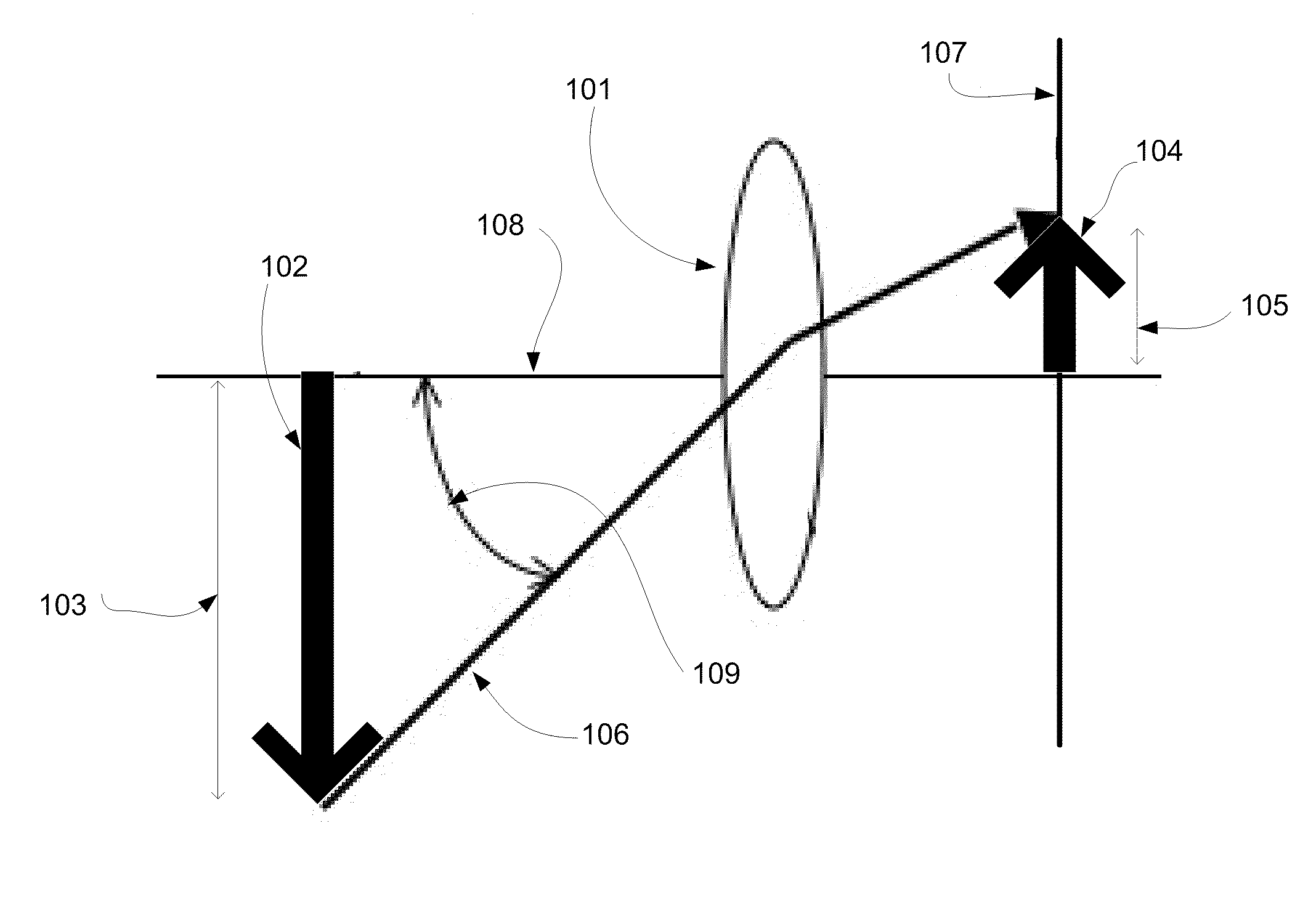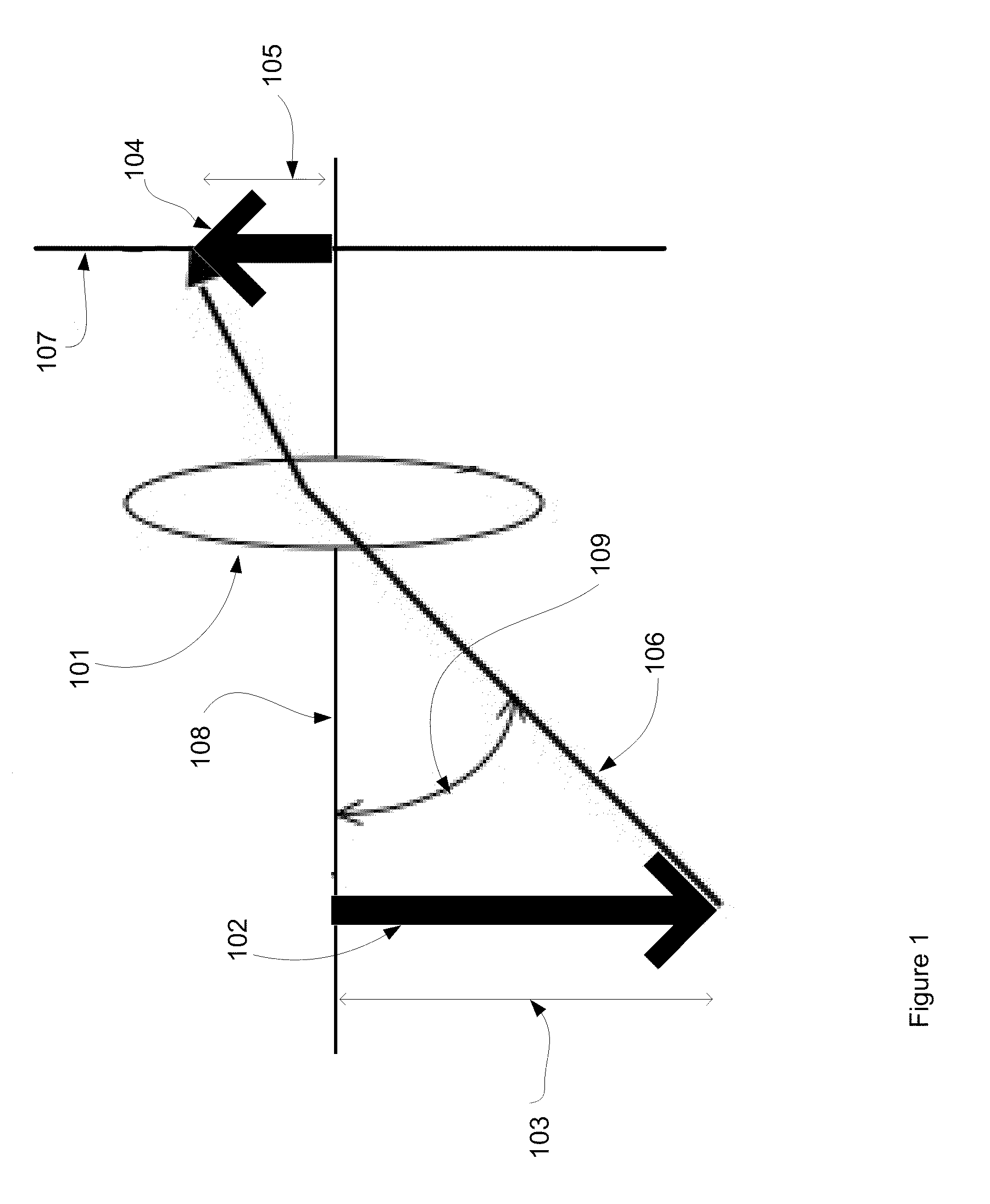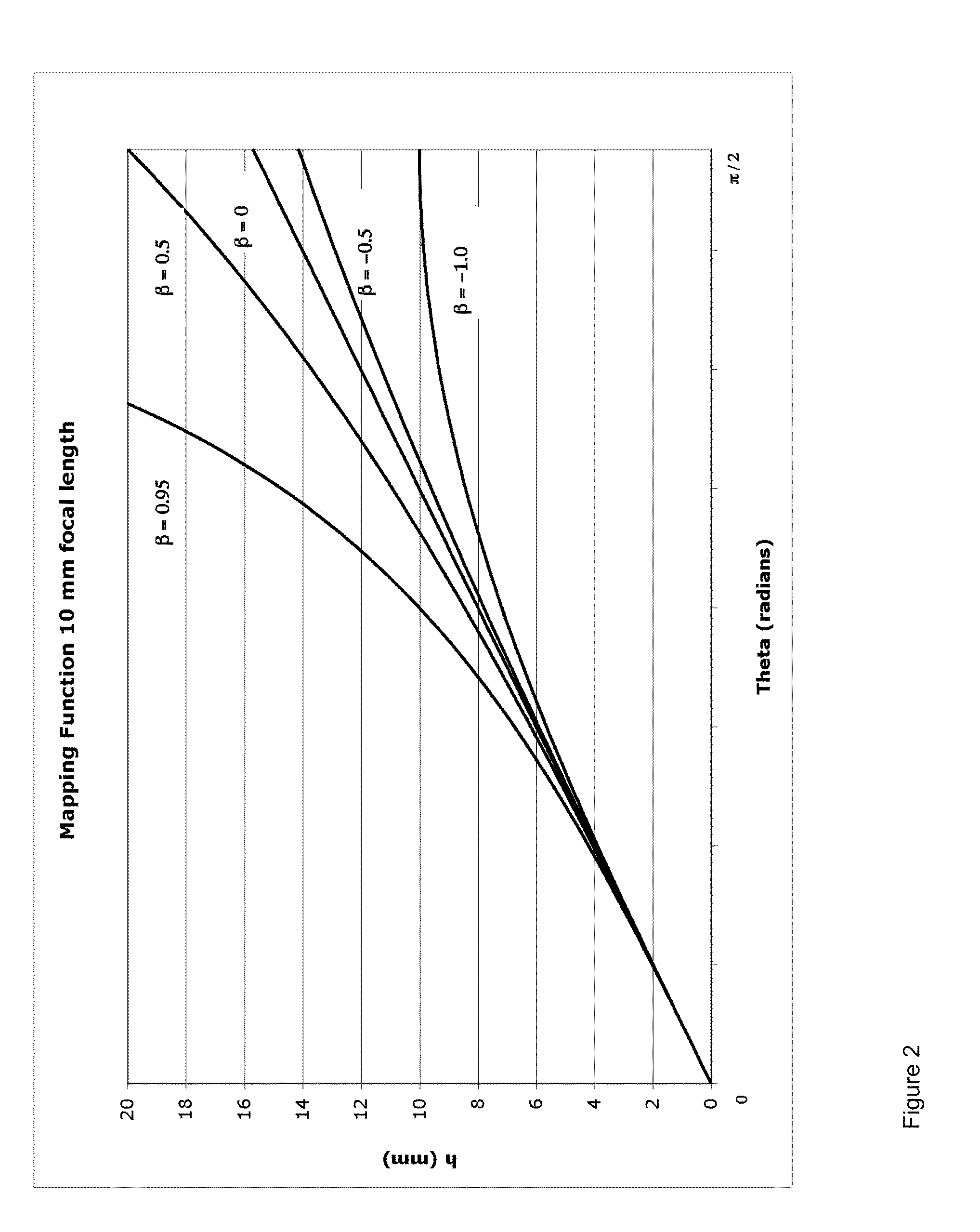Imaging system and device
a technology of imaging system and lens, applied in the field of imaging system and device, can solve the problems of difficult distortion of a tailored distortion lens through the design of the optics, unavoidable geometric lens distortion, and difficult to see significant amount of distortion, so as to preserve the overall field of view and expand or shrink the central section of the imag
- Summary
- Abstract
- Description
- Claims
- Application Information
AI Technical Summary
Benefits of technology
Problems solved by technology
Method used
Image
Examples
Embodiment Construction
[0033]The term “lens element” means a single transparent mass of refractive material having two opposing refracting surfaces. An aspheric element is a lens element having at least one refracting surface that is neither spherical nor flat. The term “lens component” is defined as (a) a single lens element spaced so far from any adjacent lens element that the spacing cannot be ignored in computing the optical properties of the lens assembly, or (b) two or more lens elements that have their adjacent lens surfaces either in full overall contact or overall so close together that the spacing between adjacent lens surfaces can be ignored in computing the overall lens assembly performance. Lens elements and lens components are identified numerically increasing from object to image.
[0034]FIG. 1 shows the functionality of a lens. An object 102 is imaged by a lens system 101 having an optical axis 108. The lens system 101 may consist of a single lens element or multiple lens elements. A single ...
PUM
 Login to View More
Login to View More Abstract
Description
Claims
Application Information
 Login to View More
Login to View More - R&D
- Intellectual Property
- Life Sciences
- Materials
- Tech Scout
- Unparalleled Data Quality
- Higher Quality Content
- 60% Fewer Hallucinations
Browse by: Latest US Patents, China's latest patents, Technical Efficacy Thesaurus, Application Domain, Technology Topic, Popular Technical Reports.
© 2025 PatSnap. All rights reserved.Legal|Privacy policy|Modern Slavery Act Transparency Statement|Sitemap|About US| Contact US: help@patsnap.com



